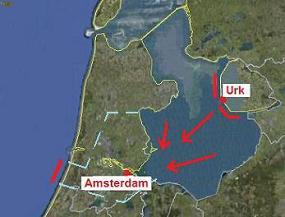
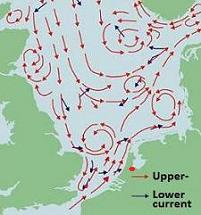
Relation with Lake (class): Lake Casualty Cemetery (LCC)
Total nr. of casualties buried here (TC): 330 end WW2, today 300.
Lake casualties, initially, end WW2 (LC-I): 100
Unknown today: 50, all airmen & naval,
of which unknown from Lake (LC-U): 12
of which unknown from North Sea (NS-U): 10
Initial burial site in WW2: yes, Lake Cemetery West side of Lake (LCW)
Post war burial site for collection and reburial from other sites: yes
Cemetery with Lake casualties today: yes (LCW).
AMSTERDAM. New Eastern Cemetery War Graves. Introduction
Holland and Amsterdam lay on the Allied bomb-routes England to Germany 1939-1945. End WW2, most 335 war graves in A'dam were Allied airmen, bomber crews, casualties of attacks on German cities. Some were killed by sea targets as ship convoys and North Sea ports, but most became casualties in the Strategic Bombing Campaign on Northern Germany, Berlin and the Ruhr Vally. German Flak and (night-) fighters attacked them with fury. Hundreds of aircraft came down in the Zuyder Sea area. Amsterdam and dozens of villages around the Lake have war graves with Allied aircrew.
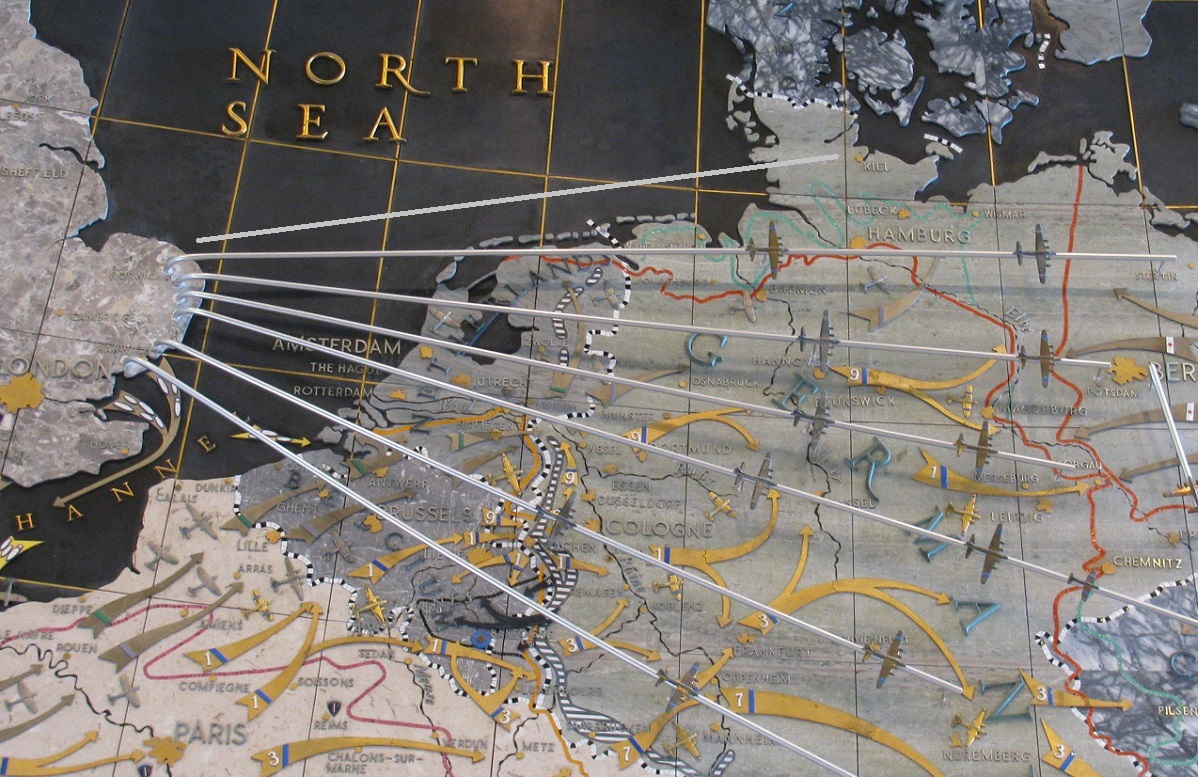
The Amsterdam New Eastern Cemetery became the largest airwar cemetery in this region and the Netherlands. In 1940 it was used by the Germans also as centralisation cemetery for aircraft crashed further away (Callantsoog, Deventer). The German Luftwaffe had the Amsterdam Wilhelmina Gasthuis Hospital in use. Wounded airmen that died there were buried in the New Eastern. It was also the designated burial site for the Beemster and Waterland polders, for airmen killed attacking Schiphol airfield, for military washed ashore on the North Sea beach at Zandvoort (owned by the Amsterdam City Drinkwater Company) and dead that were sailed in from Lake IJsselmeer (Old Zuyder Sea), Volendam, Marken and Urk. Most remains had drifted in lake or sea for months, making ID difficult. This is the reason that 50 men rest in A'dam as 'Known unto God'. However, more and more details on who they might be come to light.
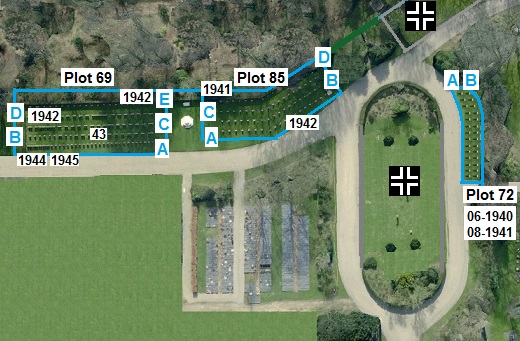
Dutch name cemetery: De Nieuwe Ooster.
Full name: Amsterdam New Eastern Cemetery.
Address (usable for car navigation):
Kruislaan 126/Rozenburglaan 5-7, Amsterdam.
For reaction or comments; send us an email,
see address and info at CONTACT.
Please use as subject title: 'Amsterdam'.
PHOTO RIGHT: Burials started June 1940 in Plot 72. Here the first 39 RAF flyers were buried.
The Germans buried their own war dead (also most pilots) in the big oval field left of Plot 72 and to the north of Plot 72. End of WW2 the Germans had 1000 of their military buried in Amsterdam. They were exhumed 1958, the former German plots were not used again.
Plot 72, row A & B. Single one coffin graves (39 men). Full August 1941. Post war transferred to Plot 85 and 69. Plot 72 was never used again and is an empty field today.
Plot 85, row A - D. Single one coffin graves. Burial started here in September 1941. It was full summer 1942 (65 men).
Plot 69, row E (back row). Single one coffin graves. Burial started here 3rd July 1942, full 1st August 1942 (20 men).
Mid 1942 the Bombing Offensive on Germany intensified and with larger aircraft. Shortage of burial space. Dutch solution: stacked coffins from then on.
In 1940 the casualties in first Plot 72 were 3-men crews of the RAF Blenheim light bomber. They made individual attacks on the Dutch coastline, Germany and German shipping on the North Sea. Later in 1940, 1941 and begin 1942 the Blenheims were followed by RAF Whitley, Hampden and Wellington bombers. These were 2-engined bombers with a 5 men crew. When in 1942 the bombers streams to Germany grew and aircraft became larger (RAF Stirling, Halifax and Lancaster 4-engined bombers with 7 men crew), the New Eastern Cemetery could not keep up with the number of burials and ran out of space. Up to then each grave had received one coffin per grave (single grave). This changed 19 August 1942. The 2nd row on Plot 69 (row D) received two coffins per grave. Thanks to this capacity on this row increased to 20 x 2 = 40 coffins, but it helped only until December 1942.
With RAF bombers flying over every night begin 1943, Plot 69 next row (row C) received four coffins stacked per grave, starting January 1943. This increased capacity 20 x 4 = 80 coffins per row. This was continued for row B, because the Americans began daylight raids over Germany. Their B-24 and B-17 held 10 men crew. Also row B filled fast with 80 coffins. In the spring of 1944, transport became dangerous and more and more Allied airforce casualties were buried in small local cemeteries. Still Amsterdam's last (front) row A received 15 casualties.
Summarized:
Plot 69, row D. 1942. Row D has two coffins in one grave. This increased capacity to 40 coffins. Row D was filled in 1942 in a short time (40 men).
Plot 69, row C. 1943. Row C contains 20 graves x 4 coffins each, stacked (80 men).
Plot 69, row B. End 1943 - begin 1944. American daylight raids over Northern Germany. Row B also has 20 x 4 coffins per grave, stacked (80 men).
On the left side of row B, 30 Americans were exhumed in March 1946 and buried elsewhere.
Plot 69, row A. 1944-1945 (front row at path). Also 4 coffins per grave. Six graves used (15 men). Not all graves fully filled. Rest of row not used.
After the war, the number of airmen on this cemetery increased because of wreck recovery and names (crew members) were added on headstones.
======================================================================================================================
The cemetery's administration.
The research we made on the war graves in this cemetery are based on the New Eastern's original civilian burial administration, not on German Military or CWGC records. The old civil files were and are not present in the cemetery's archive. They had to be retrieved from other source and reconstructed from bits and pieces. In the end, the civilian burial file proved very precise. Not surprising, because the New Eastern was since 1890 a new and professional, semi-public/commercial cemetery and it kept excellent burial records on the Amsterdam civilians interred. When WW2 broke out, the caretaker of the cemetery used his same system for the Allied casualties.
For each airman he wrote down info he extracted from Germans soldiers that delivered the coffin and he gave each coffin an unique number. He waited a few days until enough coffins were present for a group burial. Often this meant washed ashore crew (incl. nameless) of the same aircraft came together. No matter if they were buried mixed between airmen from other crashes, or were laid in separate graves or rows, thanks to burial date, recording of origin, other details and number-system of each coffin in the grave, a (suspected) link between possible crew members could remain intact. This is information that the headstones of today do not show. The background information is vital in the search for MIA airmen/identification of buried as unknown airmen and we used it for the comment we made on each non-identied airman on this website.
"Joint Graves" and "Collective Graves"
As already mentioned, in Plot 69 row D, the caretaker placed 2 coffins in one grave because of lack of space. In Plot 69 row C, B and A, he placed 4 coffins on top of each other with a layer of sand between each one. He had numbered each coffin and recorded carefully the position in the deep grave (deep-1, deep-2. deep-3 and deep-4). This is a standard Dutch practice where burial space is short. After the war, the Commonwealth War Graves Commission (CWGC) renamed these graves 'Joint Grave' for double graves and 'Collective Grave' for graves with 3+ coffins. The words 'Joint Grave' and 'Collective Grave' give the impression that they are short of mass-grave with several mutilated remains mixed together inside. This is in Amsterdam absolutely not the case. Each airman received his own coffin in a carefully planned and retrievable position.
Plot 69 today. Airmen buried here (215) is larger than the amount of headstones because of stacked coffins. Row C and D have two names per headstone.
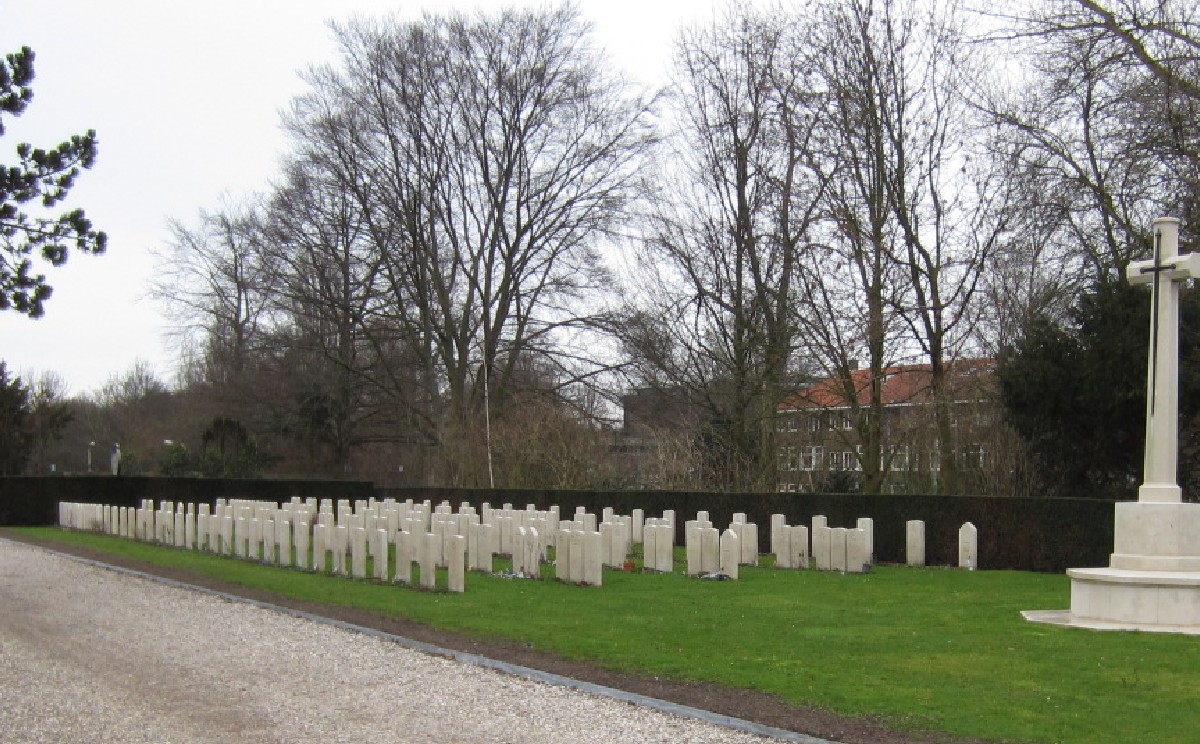
Under. Plot 69. 1942 - 1945. Schematic view from above. This image shows the situation of today including the 1940-1941 casualties added post war.
Row E (back-row) single graves 1942. Row D, double graves 1942. Row C, quadruple graves 1943. Row B, quadruple graves 1943-1944, Row A (path) today mostly single graves. Green colour: from Lake IJsselmeer (Old Zuyder Sea). Blue: North Sea. Sand colour: crash on land. White colour are quadruple graves with a combination of Lake-Sea-Land casualties.
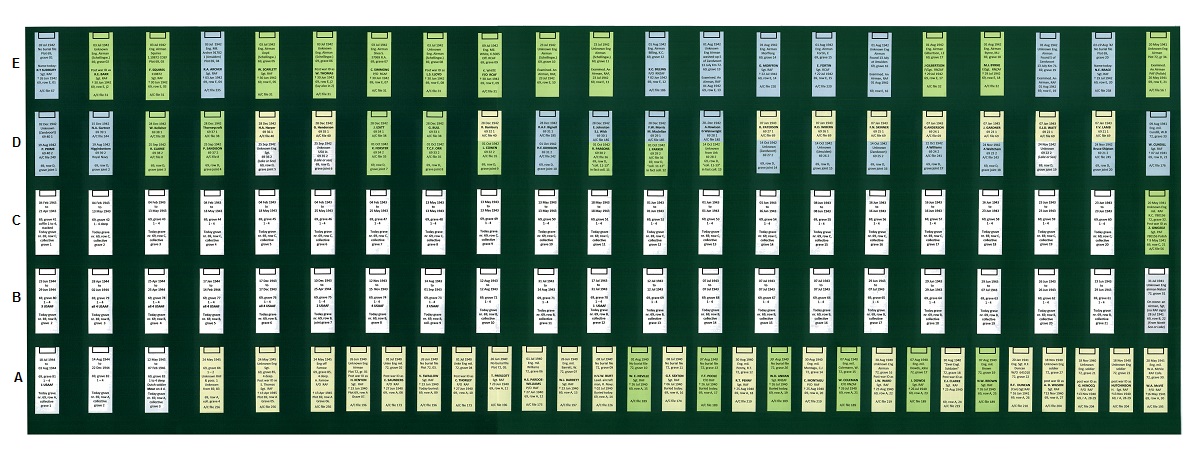
Photo under. Plot 85 today.
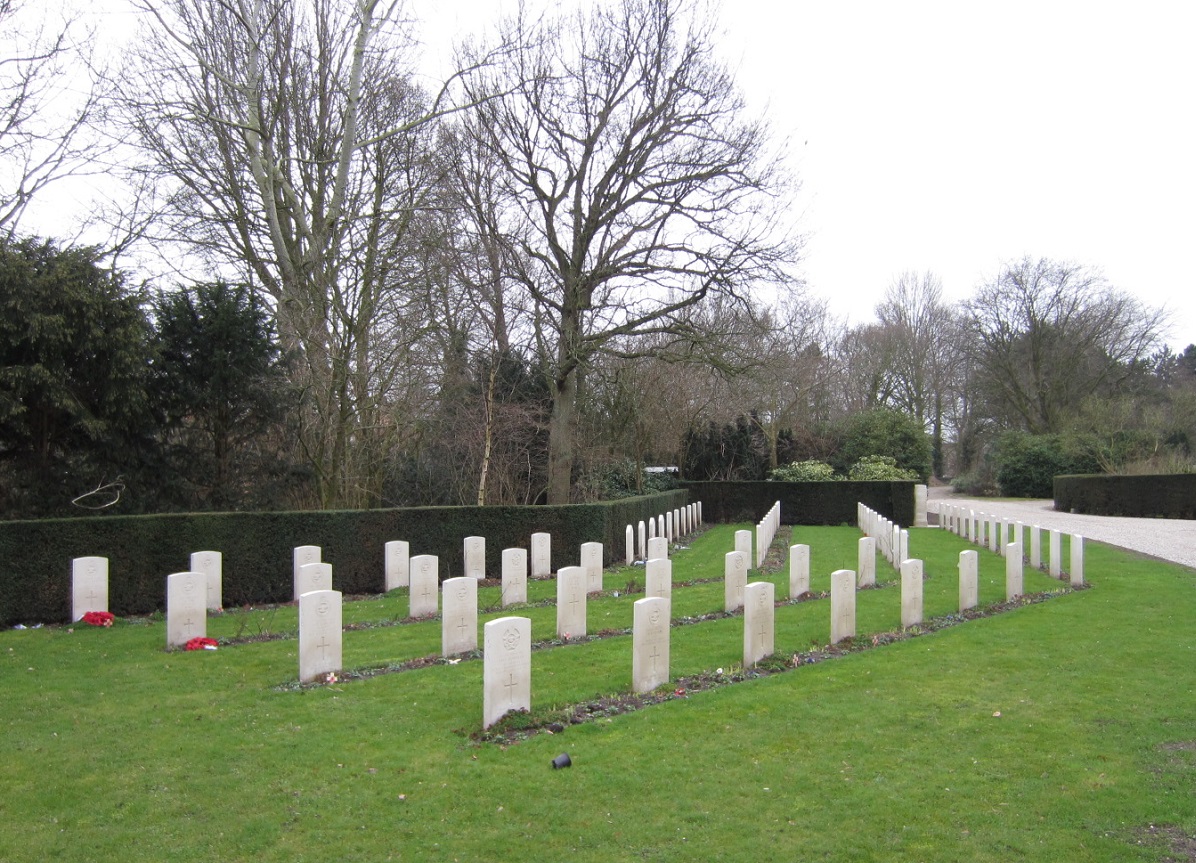
Plot 85. Green: origin Lake IJsselmeer (Old Zuyder Sea). Blue: origin North Sea. Sand colour: land crash.
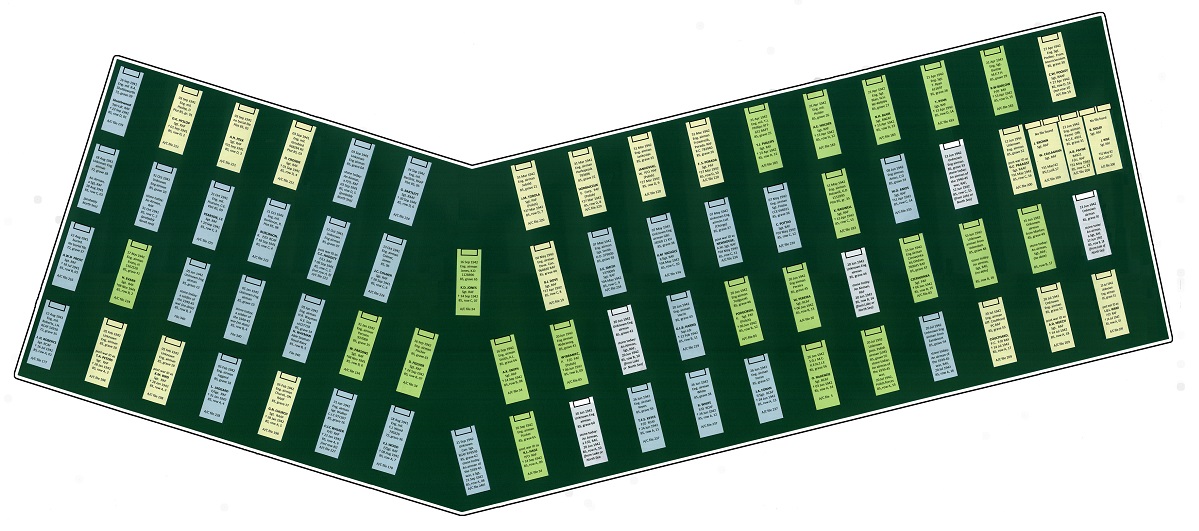
Under: Plot 72. 1940-1941. Graves were replaced in 1947 to Plot 85 and 69.
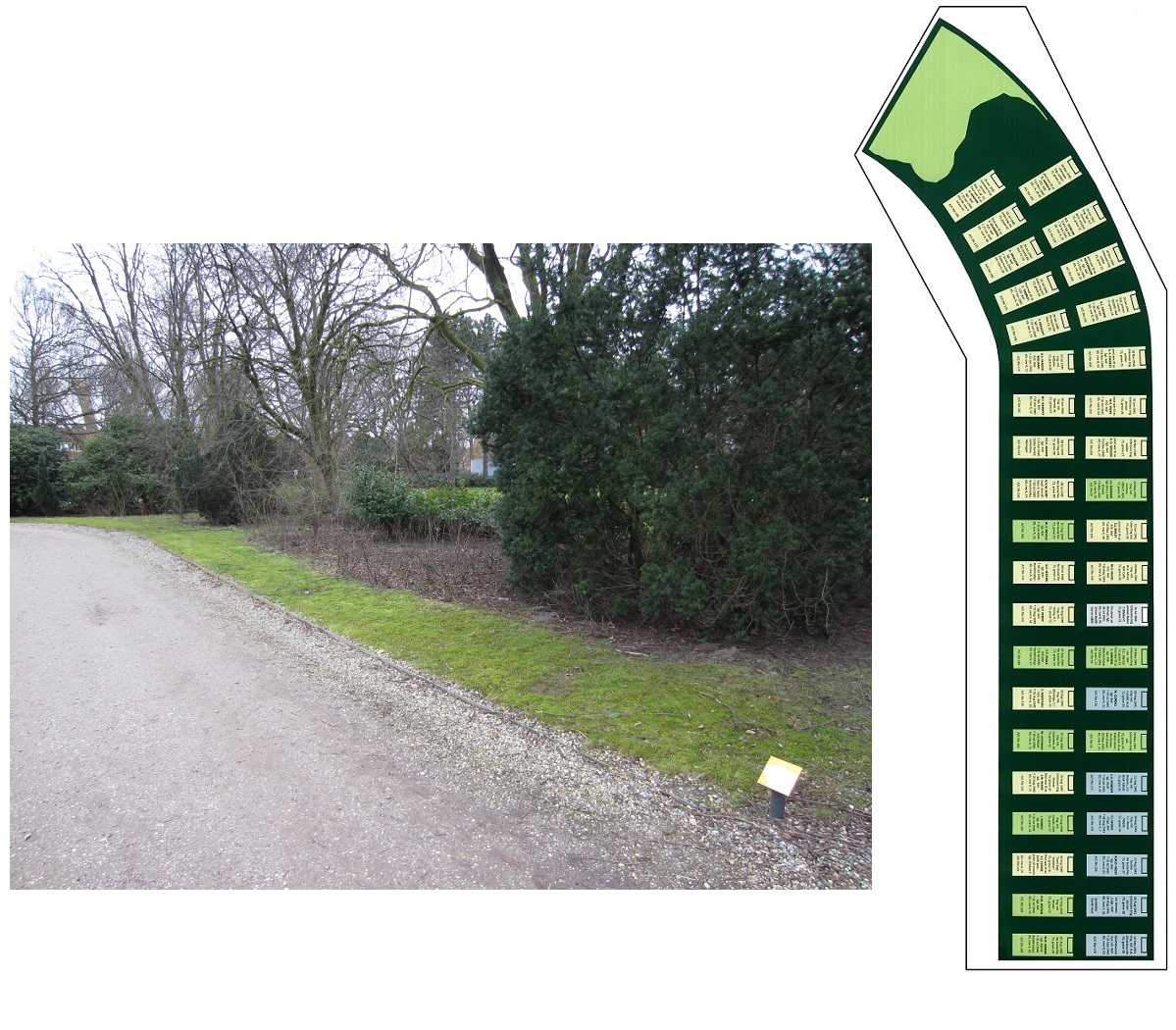
© ZZairwar (Zuyder Zee Air War)